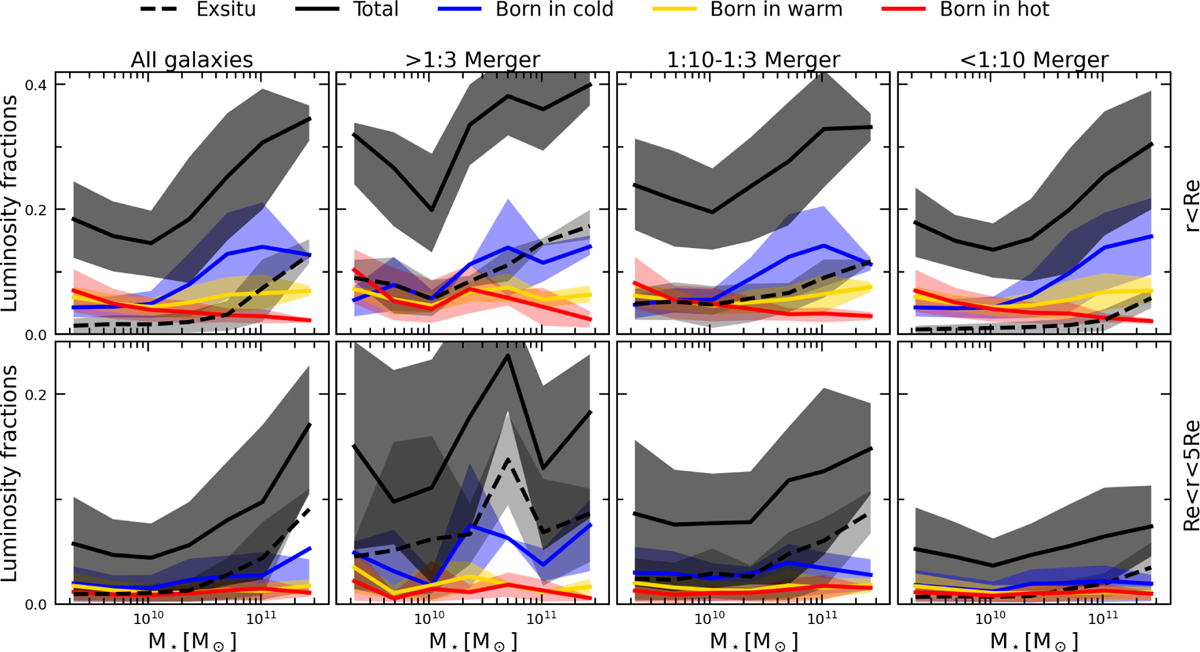Fig. 12

Download original image
Origin of dynamically hot orbits with merger history categorization. Line styles and colors are akin to Fig. 11. From left to right rows are all central galaxies in TNG50, galaxies with major mergers (mass ratio > 1 : 3), galaxies with minor mergers (mass ratio 1:3–1:10), and galaxies without any mergers with mass ratio >1:10. The stars in the inner regions (r < Re) and the outer regions (Re < r < 5Re) are shown at the top and bottom, respectively. In each panel, the solid black curve depicts the overall luminosity fraction of hot orbits in galaxies at z = 0, and the blue, yellow, and red curves indicate the contribution from in situ stars born cold, warm, and hot, respectively, the dashed curve represents the contribution of ex situ stars. The dynamically hot stars in the inner regions (r < Re) originate from a combination of different physical processes, and significant hot stars are produced in galaxies even without any mergers. In contrast, hot stars in the outer regions (Re < r < 5 Re) are primarily a product of mergers, either accreted or heated through merger processes.
Current usage metrics show cumulative count of Article Views (full-text article views including HTML views, PDF and ePub downloads, according to the available data) and Abstracts Views on Vision4Press platform.
Data correspond to usage on the plateform after 2015. The current usage metrics is available 48-96 hours after online publication and is updated daily on week days.
Initial download of the metrics may take a while.


